Architecture, Egypt
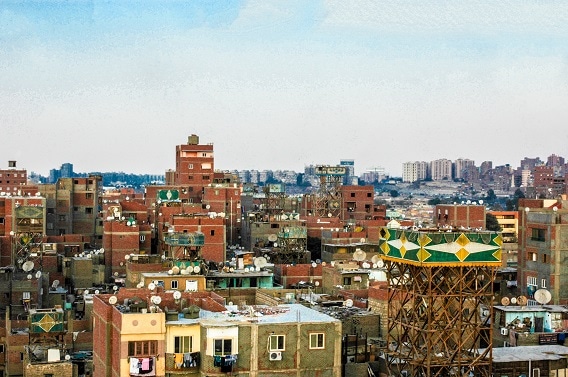
Removed from Unnamed collection
City of the Dead 
Even Cairo, a bustling capital city of 21 million or so people, has its secrets and obscurities, not least the City of the Dead. Located below Mokattam Hills in the south east of the city, the area is essentially a necropolis; but over the centuries it has evolved into a living, breathing organism of its own that has managed to reach a certain degree of self-sufficiency. Though considered a slum – and it’d be hard to argue that – it also stands as one monument to Cairo’s colourful history.
Running along the city from north to south, the strip is around 6.4km long.
The City of the Dead dates back to the Muslim conquest of Egypt in 642 AD, when Amr Ibn Al ‘as established a family graveyard at the foot of Mokattam. Many of the residents are said to have moved there to be close to deceased relatives.
It has been something of a touristic site for centuries, with the likes of Moroccan scholar, Ibn Batuta –widely considered to be one of the greatest travelers in history – having visited and written about it. https://www.cairo360.com/article/sights-travel/in-photos-the-eerie-beauty-of-the-city-of-the-dead/
Map
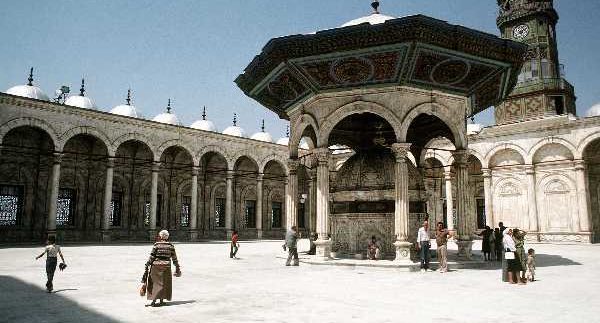
Removed from Unnamed collection
Cairo Citadel 
As familiar and known a sight as that of the Giza Pyramids, the medieval Citadel sits conspicuously over the haze of Cairo’s minarets, with the Mohammed Ali mosque glimmering like a beacon to all travellers, visitors and Cairenes alike. The gentle breeze from the hilltop location brings to mind a legend about Saladin, the builder of this medieval fortress in the 12th century. In the search to build a proper fortress against the Crusaders, he hung pieces of meat throughout Cairo and swore that wherever the meat stayed fresh the longest would become the location of his fortress. All the meat he placed was ruined in a day except for the meat hung on a hilltop near Cairo, where the fresh breeze kept the meat fresh for days. Who knows? Maybe he built the Citadel on a hill because in his native mountainous Syria most fortresses were built in strategic high locations, or maybe fresh meat was a big deal to Saladin.
The Citadel is a popular destination for tour groups and local school field trips. While most tourists are taken to the Hagia Sophia inspired Mohammed Ali mosque, they might miss the great sites that lie nearby, marking massacres, harem palaces, spiral wells, royal court drama, crime, and ancient Egyptian ruins. https://www.cairo360.com/article/sights-travel/the-citadel-cairos-ancient-fortress/
Map
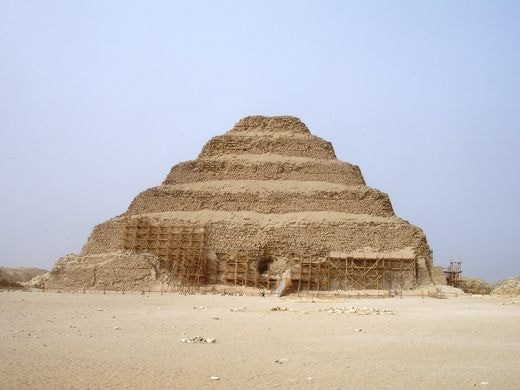
Removed from Unnamed collection
Pyramid of Djoser 
Built as a tomb for the pharaoh Djoser (or Zoser), the Djoser Pyramid was constructed between 2630 BC and 2611 BC in Saqqara, Egypt. Although it is considered the world’s oldest intact large-scale stone monument, the ancient structure is often overshadowed by Egypt’s most famous pyramids.
The Djoser Pyramid stands 197 feet high and was built using 11.6 million cubic feet of stone and clay. Imhotep—a doctor, priest, and sculptor, among other titles and talents—is widely attributed as the pyramid’s architect. Initially, the structure was designed as a traditional, flat-roofed tomb called a mastaba, but Djoser wanted something bigger, something grander.
The pyramid was part of a larger 40-acre complex containing a courtyard, temples, and chapels, all enclosed inside a 30-foot wall. The entrance to the complex, as well as 13 fake doors, is built into the wall. The complex also includes a number of building facades, all of which served ritual purposes.
The pharaoh’s burial chambers are located deep within the pyramid, along with those of his 11 daughters. The burial chamber is part of the pyramid’s winding, maze-like series of tunnels, which researchers think may have been designed to prevent theft (although the pyramid was eventually looted). https://www.atlasobscura.com/places/pyramid-of-djoser
Map
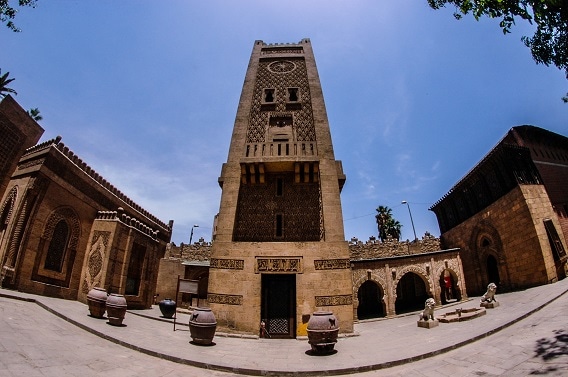
Removed from Unnamed collection
The Mosque of Muhammad Ali 
Located on Rhoda Island in Cairo’s Manial district, the Prince Mohammed Ali Palace is unlike any historical site in the capital. Built by the uncle of King Farouk, Prince Mohammed Ali Tewfik, between 1899 and 1929, what makes the palace stand out – even next to anything you’ll find in Old Cairo, which sits a stone’s throw away across a branch of the Nile – is its unique fusion of Ottoman, Persian, art nouveau and late baroque inspirations.
Divided into five distinctly conceived and designed buildings which sit in the middle of a stunning Persian garden, the palace was as much a home to Mohammed Ali’s grand collection of art, furniture, clothing and medieval manuscripts as it was for him. Lending itself to a museum blueprint, the palace was handed over to the Supreme Council of Antiquities – a former branch of the Ministry of Culture – in 1955 and quickly became one of the most striking reminders of the Mohammed Ali dynasty. The palace is also home to one of the world’s most lavish collections of Oriental carpets and rugs, while the walls silk embroideries and portraits of royals. https://www.cairo360.com/article/sights-travel/in-photos-the-majestic-grandeur-of-mohammed-ali-palace/
Map
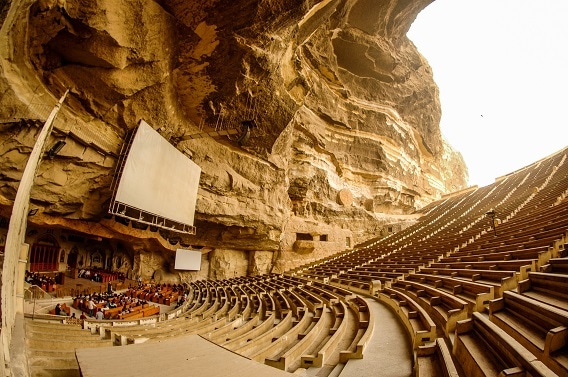
Removed from Unnamed collection
St.Samaan Church 
It’s become something of a cliché – a sad one at that – but we’ve said it before and we’ll say it again: there’s much more to Egypt than Ancient Egyptian antiquities. Granted, the Zabaleen area of Mokattam receives its fare share of attention for its sheer uniqueness, but one particular feature often goes unnoticed – St. Samaan Church.
The church is named after Samaan Al Kharaz (Simon the Ranner), who, according to the tradition, performed a miracle in moving the mountain to help Abraam – Pope of the Egyptian Church – prove his faith to a Jewish grand vizier. The areas of the mountain around the church also feature a number of carvings. These carvings were done by a Polish artist in 1995 and was commissioned by the church’s founder, Samaan Ibrahim. In addition to the church itself – which can seat up to 1000 people – the monastery also include a library, children’s playground and a cafeteria. https://www.cairo360.com/article/sights-travel/in-photos-the-stunning-serenity-of-st-samaan-church/
Map
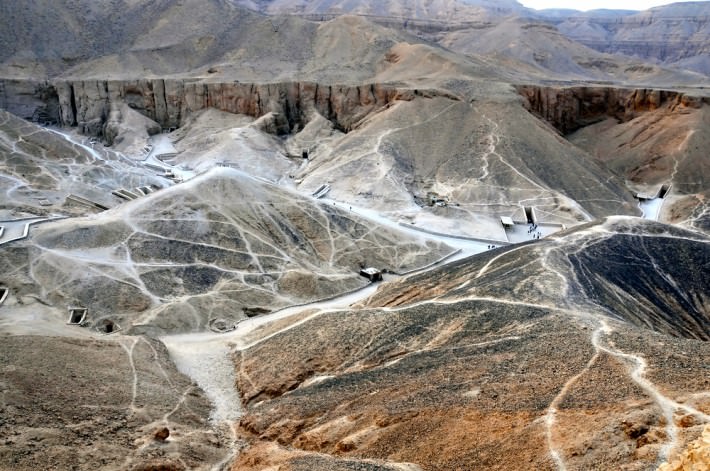
Removed from Unnamed collection
Valley of the Kings 
Valley of the Kings is without question one of the most historically significant archaeological sites in the world. For roughly 200 years, archaeologists have been exploring the site, and during this time they have discovered 65 ancient tombs, with the latest discovery being made in 2008. The valley is essentially a royal necropolis that was used by the rulers of Egypt for a period of 500 years.
Being a “royal necropolis” the area was reserved for the burial of Egypt’s New Kingdom pharaohs and a few lesser nobles. However, not all the tombs were actually used for burial purposes. Instead, several of them simply remained vacant.
The Valley of the Kings is one of Egypt’s biggest tourist attractions, with an average of around 5,000 people visiting the site each day. On days when Nile River cruise ships dock in Luxor, the number of tourists can climb to as many as 9,000. It is without doubt one of the most fascinating places in all of Egypt. https://www.egypttoursplus.com/valley-of-the-kings/
Map
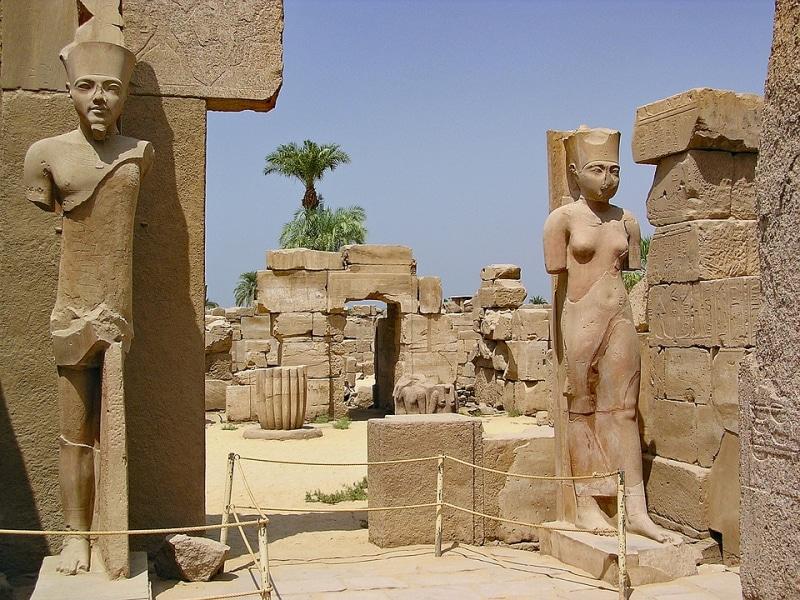
Removed from Unnamed collection
Karnak Temple 
Karnak Temple is actually a vast temple city, with many of its structures dating back 4,000 years. It is today the largest remaining religious site of the ancient world, and it is visited by thousands of tourists every year. Because of its immense popularity, it is featured in many Egypt vacation packages, including many Nile cruise holidays.
The temple complex is conveniently located near to the modern-day town of El-Karnak, just 2.5 km from Luxor. The site is massive, to the point where some people feel it’s necessary to spend at least one full day exploring the area. It’s also a good idea to have a guide with you when you visit.
As with so many things at Karnak Temple complex, the hypostyle hall is massive, covering an area of 54,000 square feet, and home to no less than 134 huge columns measuring 23 meters in height. It is only when you actually stand inside the hall amongst its forest of columns that you truly get to appreciate just how wealth the New Kingdom had and to what extend Amun was revered. https://www.egypttoursplus.com/karnak-temple/
Map

Removed from Unnamed collection
Luxor Temple 
Luxor Temple is one of six ancient temples found in the vicinity of Luxor. It was built by Amenophis III for worshipping the gods Amun, Chons and Mut.
The Temple of Luxor is placed firmly on the tourist trail in Egypt, attracting many thousands of visitors each year. It is one of six ancient temples in and around the city of Luxor in Upper Egypt, in the area that was once home to the ancient city of Thebes. The temple was initially built for religious rites to the gods Amun, Chons and Mut.
One of the most awe-inspiring features at Luxor Temple is it imposing colonnade comprising a total of 14 columns that are topped with papyrus shaped capitals. Each column is roughly 23 meters high, with a circumference of around 10 meters. Both sides on the colonnade are enclosed with masonry walls that are covered with reliefs showing scenes relating to the festival of Opet. The colonnade, along with the decorated walls was completed during the reign of King Tutankhamun and King Horemheb. https://www.egypttoursplus.com/luxor-temple/
Map

Removed from Unnamed collection
Hatshepsut Temple 
Queen Hatshepsut Temple is a mortuary temple located near the Valley of the Kings, and it is today considered to be one of the great wonders of Ancient Egypt.
Hatshepsut Temple is without question one of the most striking ancient attractions in all of Egypt. In fact, it is one of only a handful of Egyptian attractions that are considered to be “incomparable monuments of Egypt” and many historians also refer to it as being one of the Wonders of Ancient Egypt.
Visitors to Luxor in upper Egypt will find this magnificent temple located below the rocky cliffs at Deir El Bahari, just a short distance away from the infamous Valley of the Kings, on the Luxor West Bank of the Nile River. From the moment the temple comes into view, it becomes very obvious that Queen Hatshepsut, an 18th dynasty pharaoh, wanted a temple that was well and truly fit for a queen. https://www.egypttoursplus.com/hatshepsut-temple/
Map
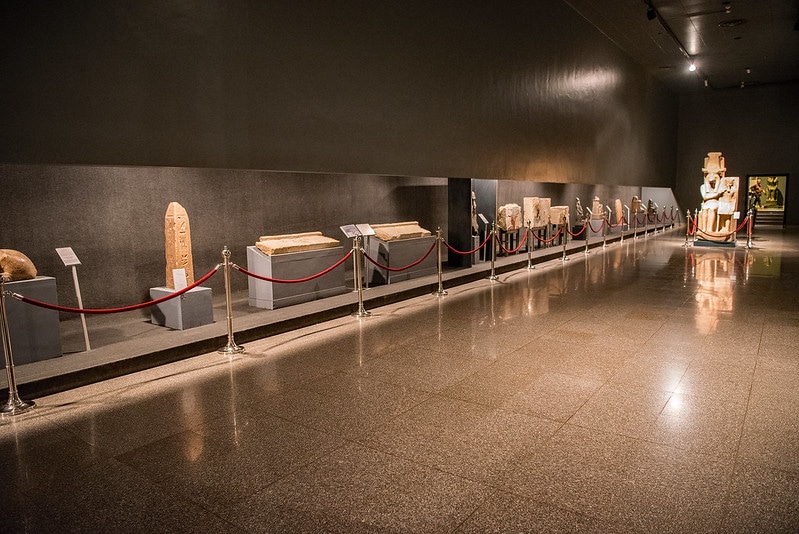
Removed from Unnamed collection
Luxor Museum 
The Luxor Museum is nowhere near as big as the Egyptian Museum in Cairo, but it was never meant to be, choosing instead to display quality rather than quantity.
The Museum of Luxor is located more or less right in the centre of Luxor, overlooking the Luxor west bank of the Nile River. Visitors who intend to visit the museum in shouldn’t expect to see anything along the lines of the Egyptian Museum in Cairo because the two places are quite literally worlds apart.
While the Museum of Egyptian Antiquities in Cairo is host to the world’s largest collection of Egyptian antiquities, Luxor Museum only has a relatively small collection, but it’s definitely worth visiting. When the museum was originally opened in 1975 there were no plans to house a massive collection of artefacts. Instead, the museum has a sort of “quality before quantity” policy. https://www.egypttoursplus.com/luxor-museum/
Map
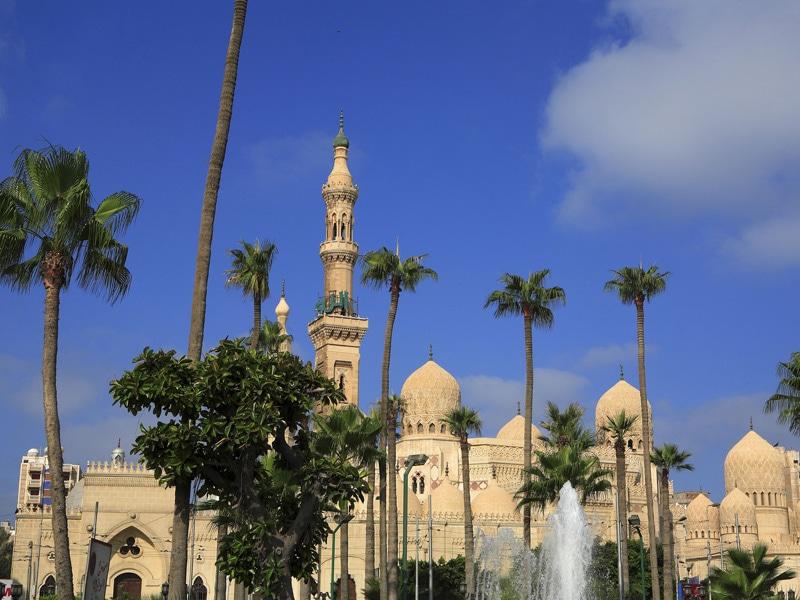
Removed from Unnamed collection
Abu Al-Abbas Al-Mursi Mosque 
Abu Al-Abbas Al-Mursi is Alexandria’s largest mosque; with a cream coloured facade, four great domes, arabesque designs and a high minaret, the mosque is a beautiful sight. http://www.egypt.travel/attractions/abu-al-abbas-al-mursi-mosque-3/
Map

Removed from Unnamed collection
Alexandria National Museum 
Located close to the center of the city, the Alexandria National Museum nicely sums up the history of Alexandria in the three floors of the now renovated Italianate style Al-Saad Bassili Pasha Palace. http://www.egypt.travel/attractions/alexandria-national-museum/
Map

Removed from Unnamed collection
Temple of Kalabsha 
Walk along an imposing stone causeway that leads from the banks of the lake to the first pylon of the temple, pass a colonnaded court and into the eight columned hypostyle hall. Note the hieroglyphs and the reliefs of Greek pharaohs paying homage to Ancient Egyptian deities. Look for Mandulis, the god clad in the vulture feathered cloak. Built during the late Ptolemaic period and completed during the reign of the Roman emperor Augustus, the Temple of Kalabsha was dedicated to the Nubian god called Mandulis. http://www.egypt.travel/en/attractions/temple-of-kalabsha
Map
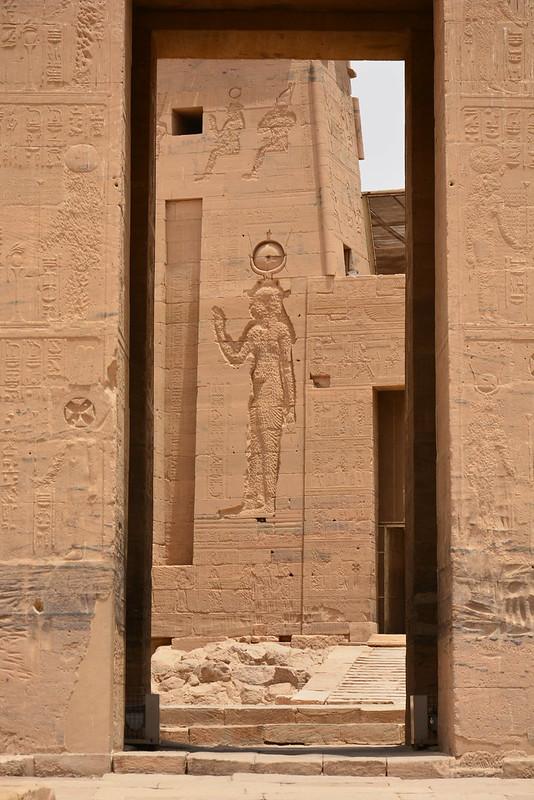
Removed from Unnamed collection
Philae Temple 
Philae is dedicated to Isis - the Goddess of motherhood, magic and fertility. As a symbolic mother of the king, she appears as a woman with a throne-shaped crown or sometimes depicted with the sign of motherhood and fertility: the two horns and the solar disc between them. Her cult spread over Europe since the Greco-Roman period.
The cult of Isis at Philae goes back to the 7th century BC, but the earliest remains date from the 4th century BC.
And Isis was being worshipped at Philae until the 6th century AD!
By Roman times Isis had become the greatest of all the Egyptian gods, worshipped right across the Roman Empire even as far as Britain. http://www.aswan-individual.com/html/philae.html
Map

